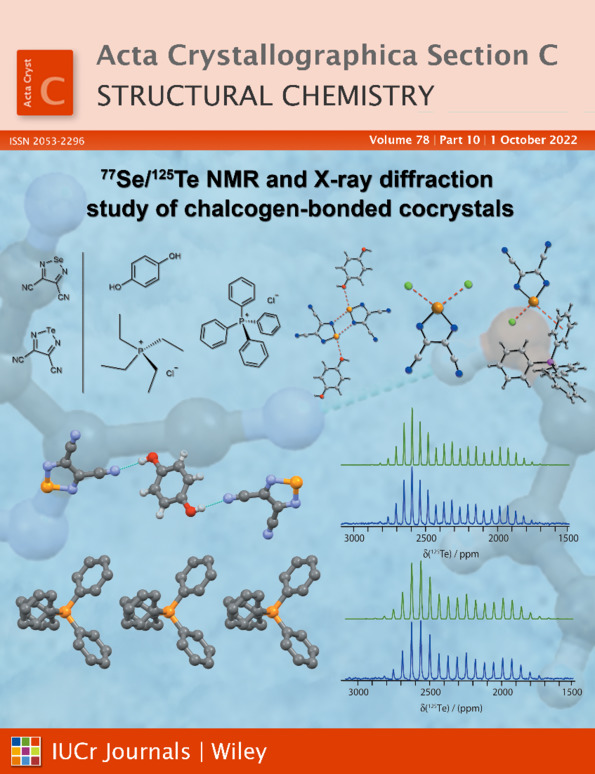A structural and computational comparison of close contacts and related intermolecular energies of interaction in the structures of 1,3-diiodo-5-nitrobenzene, 1,3-dibromo-5-nitrobenzene, and 1,3-dichloro-5-nitrobenzene
Abstract
1,3-Diiodo-5-nitrobenzene, C6H3I2NO2, and 1,3-dibromo-5-nitrobenzene, C6H3Br2NO2, crystallize in the centrosymmetric space group P21/m, and are isostructural with 1,3-dichloro-5-nitrobenzene, C6H3Cl2NO2, that has been redetermined at 100 K for consistency. While the three-dimensional packing in all three structures is similar, the size of the halogen atom affects the nonbonded close contacts observed between molecules. Thus, the structure of 1,3-diiodo-5-nitrobenzene features a close Type 1 I…I contact, the structure of 1,3-dibromo-5-nitrobenzene features a self-complementary nitro-O…Br close contact, while the structure of 1,3-dichloro-5-nitrobenzene also has a self-complementary nitro-O…Cl interaction, as well as a bifurcated C—H…O(nitro) close contact. Notably, the major energetically attractive intermolecular interaction between adjacent molecules in each of the three structures corresponds to a π-stacked interaction. The self-complementary halogen…O(nitro) and C—H…O(nitro) interactions correspond to significant cohesive attraction between molecules in each structure, while the Type 1 halogen–halogen contact is weakly cohesive.




